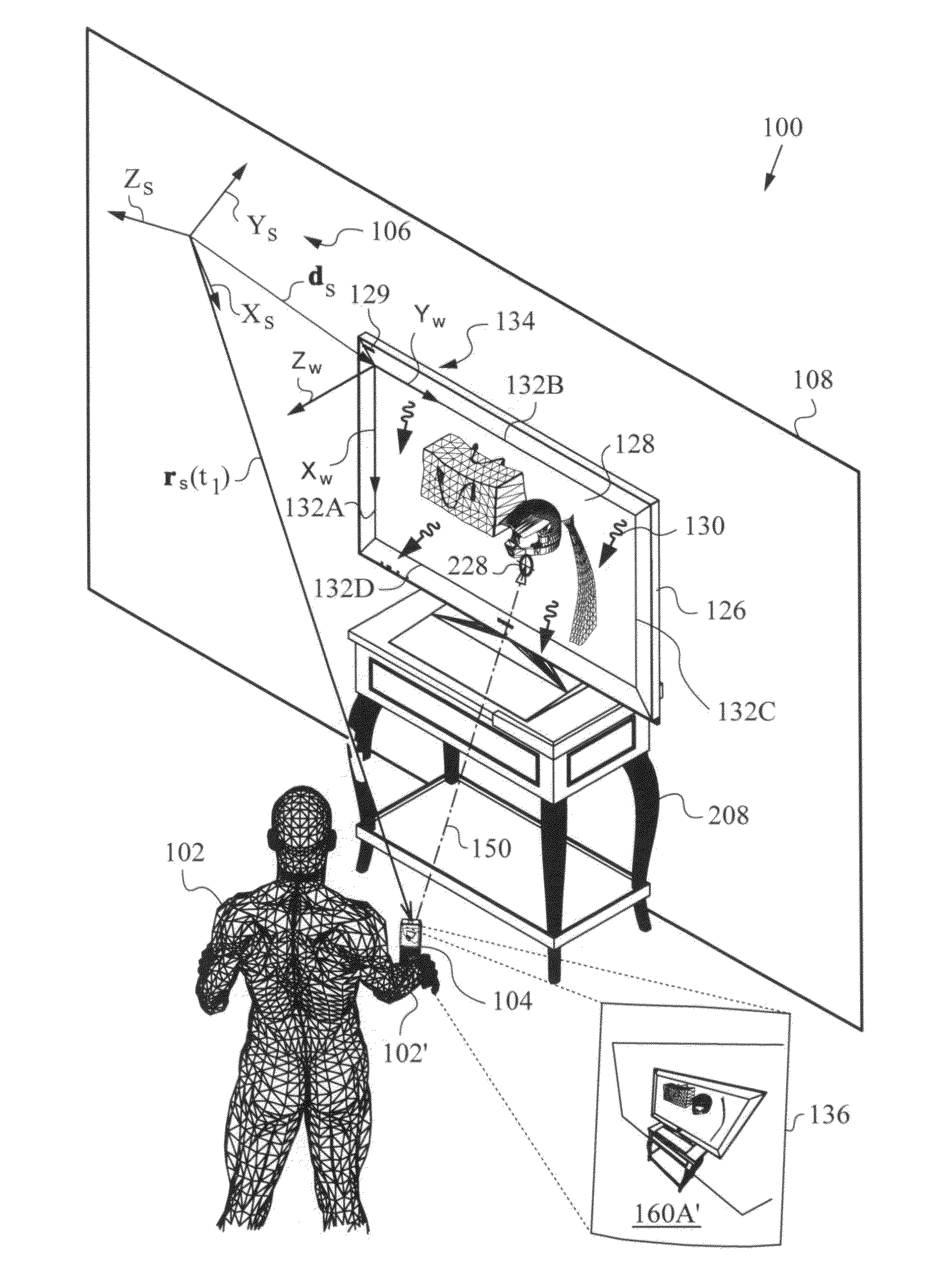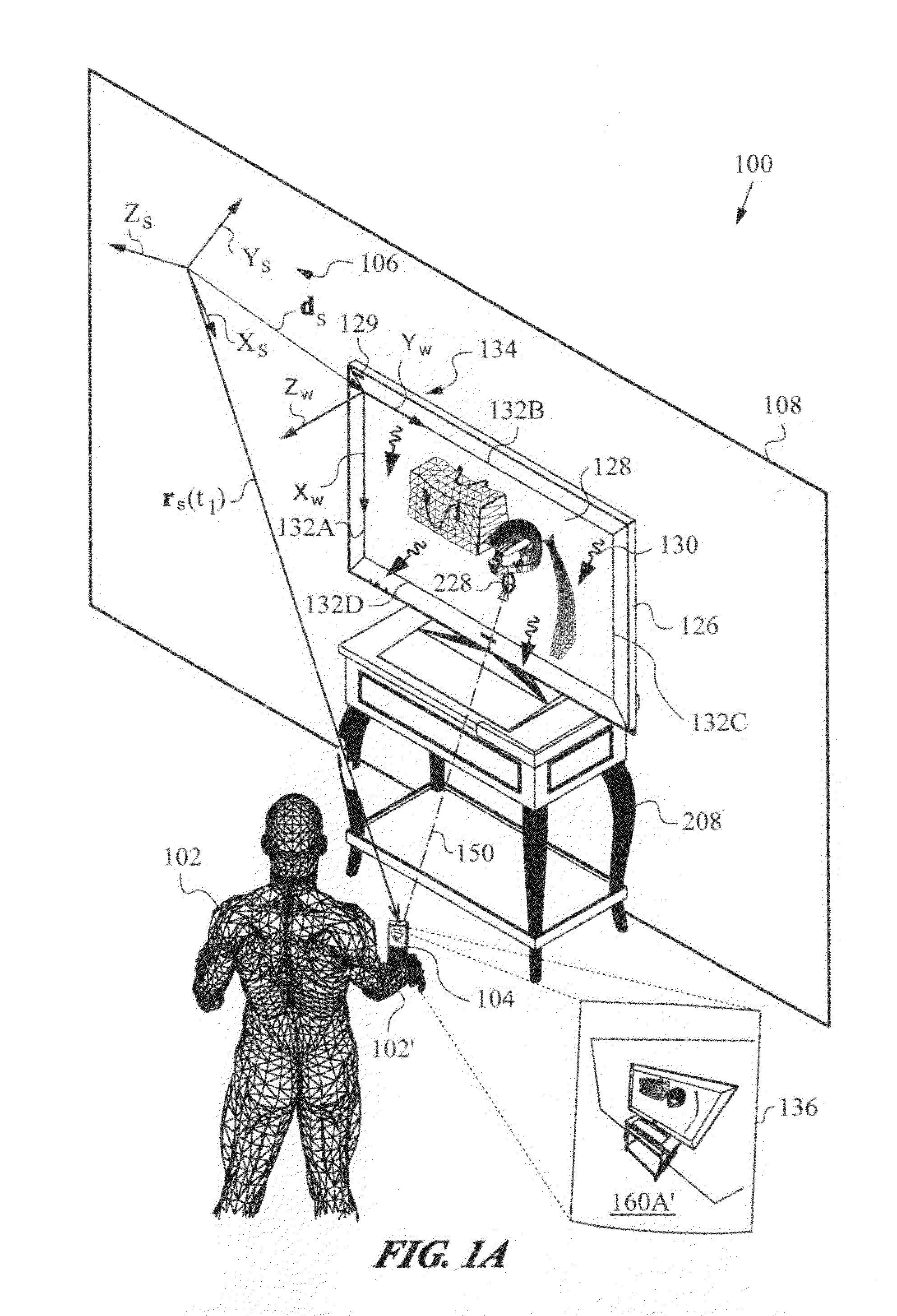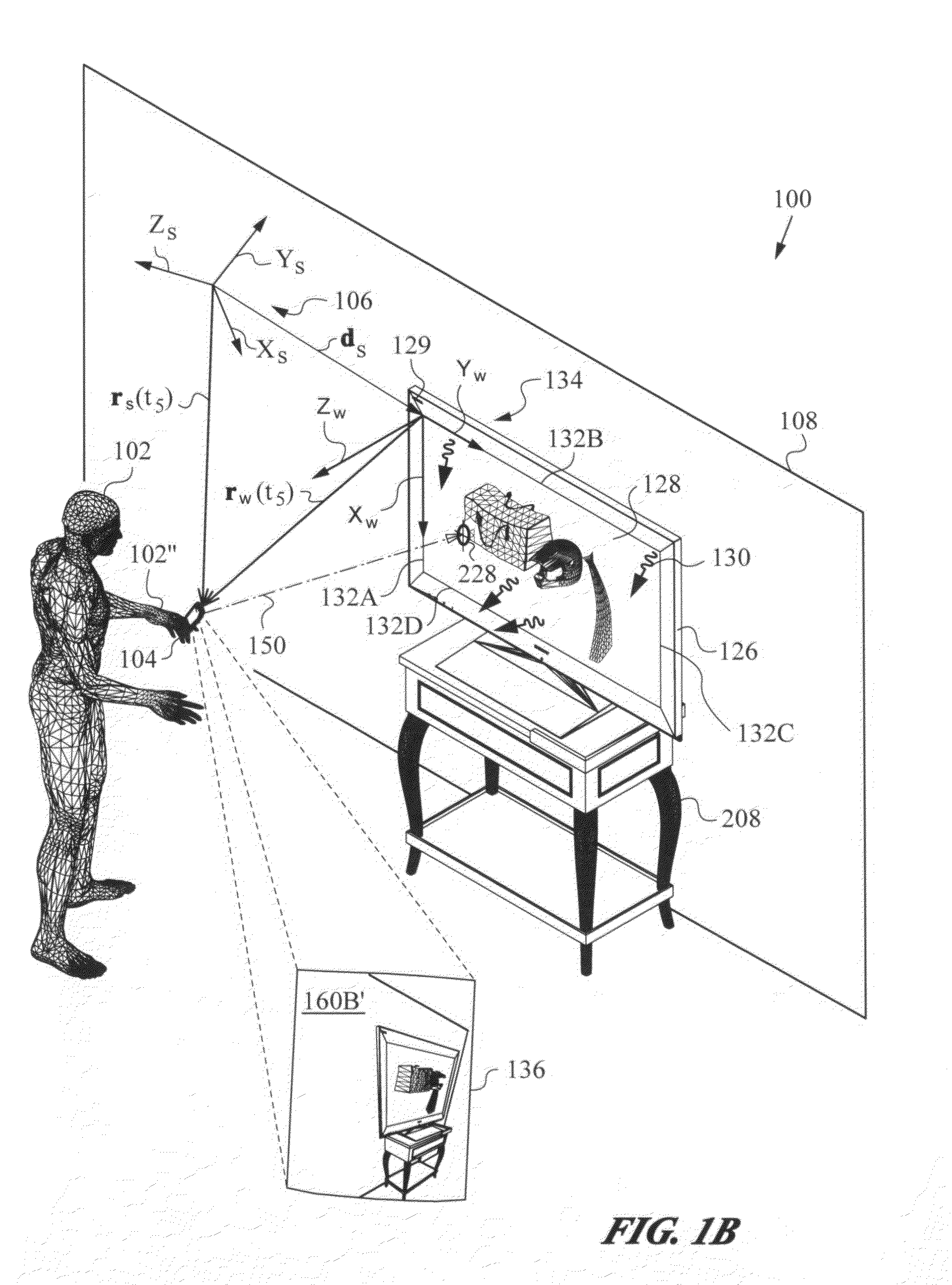Deriving input from six degrees of freedom interfaces
a technology of input and output, applied in the field of determining an absolute pose, can solve the problems of unconstrained motion of items in many three-dimensional environments, may not lend itself to a simple description in terms of equations of motion, and the prior art approach is limited, bulky and inconvenien
- Summary
- Abstract
- Description
- Claims
- Application Information
AI Technical Summary
Benefits of technology
Problems solved by technology
Method used
Image
Examples
Embodiment Construction
[0132]The various aspects of an interface according to the invention will be best understood by initially referring to two isometric views of a real three-dimensional environment 100 as illustrated in FIGS. 1A-B. A user 102 residing in environment 100, which may be an indoor or an outdoor environment, is holding in his / her right hand 102′ an item 104 that also resides in environment 100. It is important that item 104 be physically associated with user 102 such that the user's 102 physical disposition and changes therein are reflected by item 104. In other words, the static positions, poses, actions, gestures and other movements of user 102 need to translate in some manner to corresponding absolute position(s) and orientation(s) of item 104 and / or changes to corresponding position(s) and orientations(s) of item 104. For example, in the present case item 104 is a cell phone that is held in right hand 102′ by user 102 and manipulated.
[0133]Three-dimensional environment 100 has a spatia...
PUM
 Login to View More
Login to View More Abstract
Description
Claims
Application Information
 Login to View More
Login to View More - R&D
- Intellectual Property
- Life Sciences
- Materials
- Tech Scout
- Unparalleled Data Quality
- Higher Quality Content
- 60% Fewer Hallucinations
Browse by: Latest US Patents, China's latest patents, Technical Efficacy Thesaurus, Application Domain, Technology Topic, Popular Technical Reports.
© 2025 PatSnap. All rights reserved.Legal|Privacy policy|Modern Slavery Act Transparency Statement|Sitemap|About US| Contact US: help@patsnap.com



